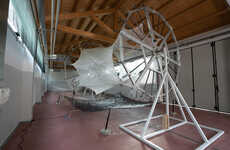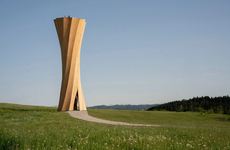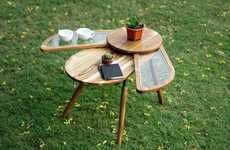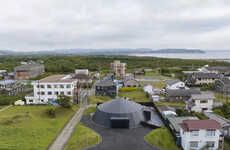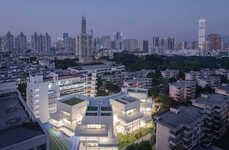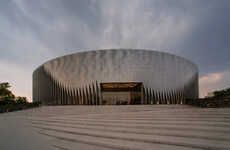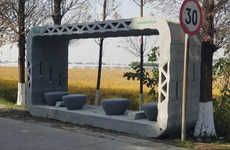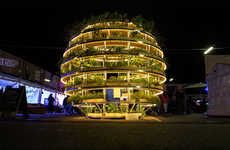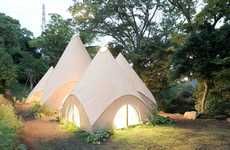
The Elytra Design Won the Moscow Circus School Competition
Joey Haar — September 13, 2016 — Art & Design
The Moscow Circus School recently ran a competition for the design of its new building and Elytra, a design by architects Maryan Fazel and Belinda Ercan, was deemed the victor. Elytra's oblong, exoskeletal columns are based on the forewings of insects (body parts called "elytra" in entomology.)
Set to be erected in Moscow's Tverskoy District, Elytra will tower over many of the traditional buildings currently in the area. However, Tverskoy is home to a burgeoning Moscow arts scene and the Moscow Circus School hopes that its new building will become one of the focal points of that evolution.
Though the building is a private space for the Moscow Circus School's classes and training facilities, it also has a publicly accessible roof that will provide views onto the activities inside, further nurturing the building's cultural importance.
Set to be erected in Moscow's Tverskoy District, Elytra will tower over many of the traditional buildings currently in the area. However, Tverskoy is home to a burgeoning Moscow arts scene and the Moscow Circus School hopes that its new building will become one of the focal points of that evolution.
Though the building is a private space for the Moscow Circus School's classes and training facilities, it also has a publicly accessible roof that will provide views onto the activities inside, further nurturing the building's cultural importance.
Trend Themes
1. Insect-inspired Architecture - Architects are incorporating insect exoskeleton designs into buildings and infrastructure.
2. Cultural Landmarks with Public Access - The incorporation of public spaces within private cultural facilities is becoming more popular as a way to engage communities.
3. Art-infused Urban Development - Developers are incorporating art and design as a way to spur growth in urban areas.
Industry Implications
1. Architecture and Design - Architecture firms can incorporate biologically-inspired design concepts to innovate building aesthetics and functionality.
2. Cultural Institutions - Cultural centers can leverage the design of their facilities to create a distinctive cultural experience for visitors.
3. Real Estate Development - Real estate developers can use unique architectural designs and art installations to distinguish their properties and attract buyers.
3.9
Score
Popularity
Activity
Freshness



